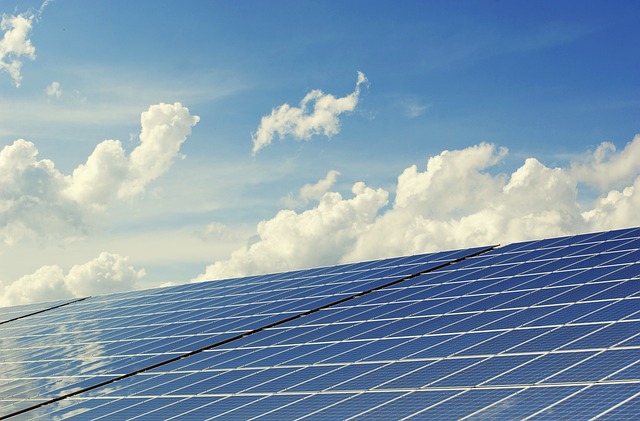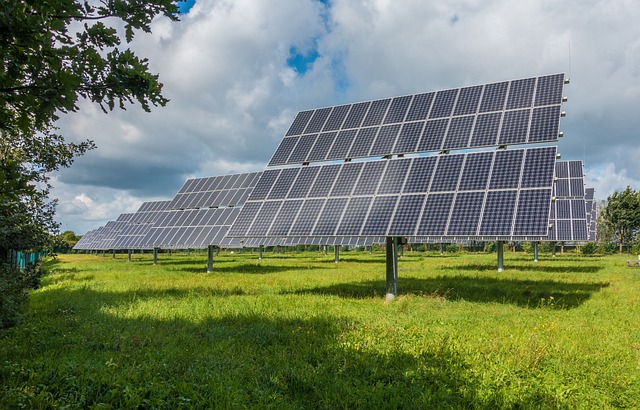Are you considering making the switch to solar power but unsure of how many panels you’ll need? Don’t worry, we’ve got you covered. In our upcoming article on HomeSolarDIY, we will provide you with a step-by-step guide on how to determine the number of solar panels required for your unique energy needs.
With our comprehensive information and easy-to-understand explanations, you’ll gain a clear understanding of the factors that affect panel requirements, such as your energy consumption, geographical location, and roof space. We will also discuss the different types of solar panels available and their efficiency ratings, helping you make an informed decision when it comes to choosing the right panels for your home.
So, if you’re ready to take the first step towards harnessing the power of the sun and reducing your carbon footprint, stay tuned for our upcoming article on how to determine how many solar panels you need. With HomeSolarDIY, going solar has never been easier! Determining how many solar panels you need for your home is a crucial step in transitioning to clean and renewable energy. The number of panels required depends on several factors, including energy consumption, sunlight availability, panel efficiency, system losses, and other considerations. In this article, we will guide you through the process of calculating your energy consumption, evaluating sunlight availability, understanding panel efficiency, taking system losses into account, and ultimately sizing your solar array.
Factors to Consider
Before diving into the calculations, it’s important to consider a few key factors that will impact the size of your solar array.
Energy Consumption
The first factor to consider is your energy consumption. Start by identifying the appliances in your home and their power ratings. This information can usually be found on the appliance itself or in the user manual. Add up the power ratings of all the appliances to determine your total energy consumption.
It’s also important to determine your average daily energy consumption. Consider your usage patterns throughout the day and any seasonal variations. Keep in mind that solar panels produce more energy during peak sunlight hours, so you may need to adjust your energy consumption habits accordingly.
Sunlight Availability
Another important factor is the amount of sunlight available in your geographic location. The more sunlight your panels receive, the more energy they will produce. Assess your location to determine the average sunlight hours throughout the year. Consider any shading or obstructions that may affect the efficiency of your panels.
Panel Efficiency
The efficiency of your solar panels is essential in maximizing their energy production. Different types of solar panels have varying levels of efficiency. Research different panel options and their efficiency ratings to determine which panels are best suited for your needs.
It’s also important to note that panel efficiency can vary depending on temperature and other environmental conditions. Consider how your panels will perform in different weather conditions to get a more accurate estimate of their energy production.
System Losses
System losses refer to the energy that is lost during the conversion, transmission, and usage of solar energy. There are various types of system losses to consider, including irradiation losses, wiring losses, inverter losses, and mismatch losses. These losses can impact the overall efficiency of your solar array, so it’s important to take them into account when calculating the number of panels needed.
Calculating Solar Panel Capacity
To determine the capacity of your solar panels, you’ll need to calculate your daily energy production, taking into account panel efficiency and system losses.
Start by calculating your average daily energy production. Multiply the average daily sunlight hours by the panel’s power rating to get the total energy production per panel.
Next, divide the daily energy production by the panel efficiency to determine the actual energy that can be utilized. This will give you a more accurate estimate of how much energy your panels will produce on a daily basis.
Finally, consider the system losses and adjust your calculations accordingly. Multiply the actual energy production by the loss factor to determine the final energy output.
Sizing the Solar Array
After calculating the solar panel capacity, it’s time to determine how many panels you need to meet your energy consumption requirements.
Consider your total energy consumption and compare it to the energy production of a single panel. Divide the total energy consumption by the energy production of a single panel to get the number of panels required.
It’s also important to consider the available space for installation. Calculate how many panels can fit in the available space and adjust your calculations if necessary.
Considering Other Factors
While the calculations mentioned above provide a solid foundation for determining the number of solar panels needed, it’s essential to consider other factors as well.
Think about your future energy needs. Will your energy consumption increase or decrease in the coming years? Take this into account when sizing your solar array to ensure it meets your long-term requirements.
Budget constraints are another important consideration. Evaluate your budget and determine how much you’re willing to invest in solar panels. Remember to consider the long-term savings that solar energy can provide.
Lastly, be aware of any solar incentives and policies in your area. Certain regions offer financial incentives or tax credits for installing solar panels. Research these opportunities to maximize your benefits.
Consulting with Professionals
While it’s possible to determine the number of solar panels you need on your own, consulting with professionals can provide valuable insights and expertise.
Consider getting a solar assessment from a reputable solar installer. They will evaluate your energy consumption, assess your location, and provide you with a comprehensive plan tailored to your specific needs.
Seeking advice from solar installers can also help you navigate the complexities of panel efficiency, system losses, and other technical aspects. They can guide you in selecting the right panels and optimizing their performance.
Conclusion
Determining how many solar panels you need requires careful consideration of factors such as energy consumption, sunlight availability, panel efficiency, system losses, and other relevant aspects. By following the steps outlined in this article and consulting with professionals, you’ll be able to confidently size your solar array and embark on a journey towards a greener future.
Remember, HomeSolarDIY is here to support you every step of the way. With our extensive resources, vibrant community, and expert guidance, you have all the tools you need to make solar energy a reality for your home. Embrace the power of the sun and start reaping the rewards of clean, renewable energy.

This image is property of pixabay.com.

